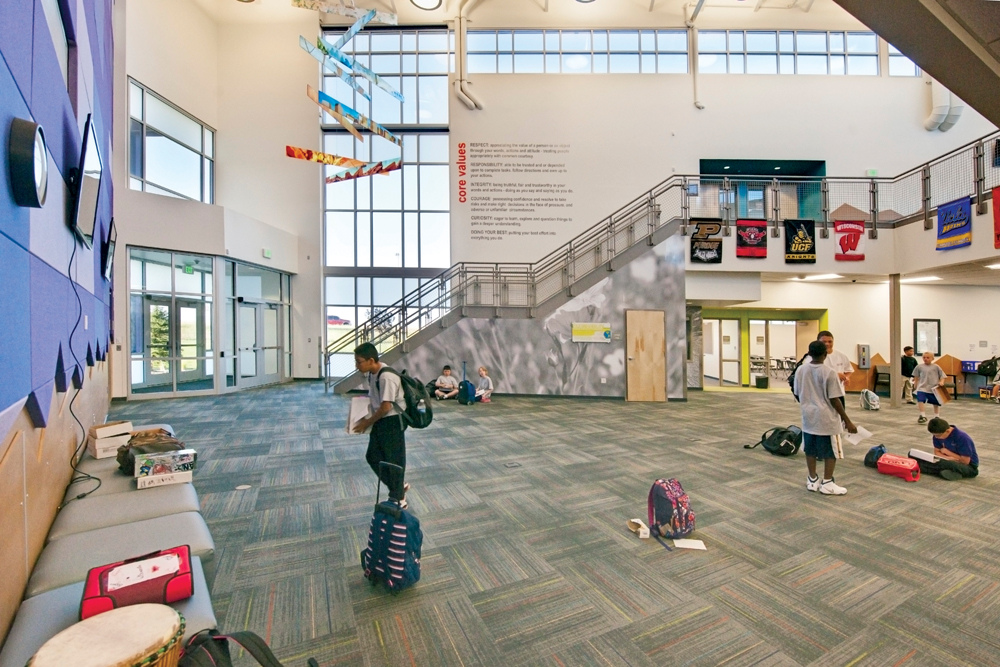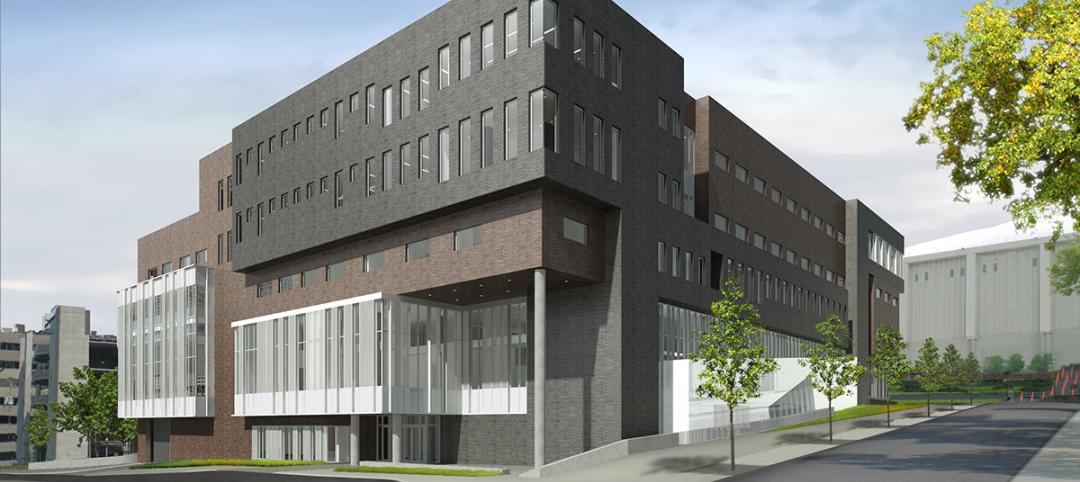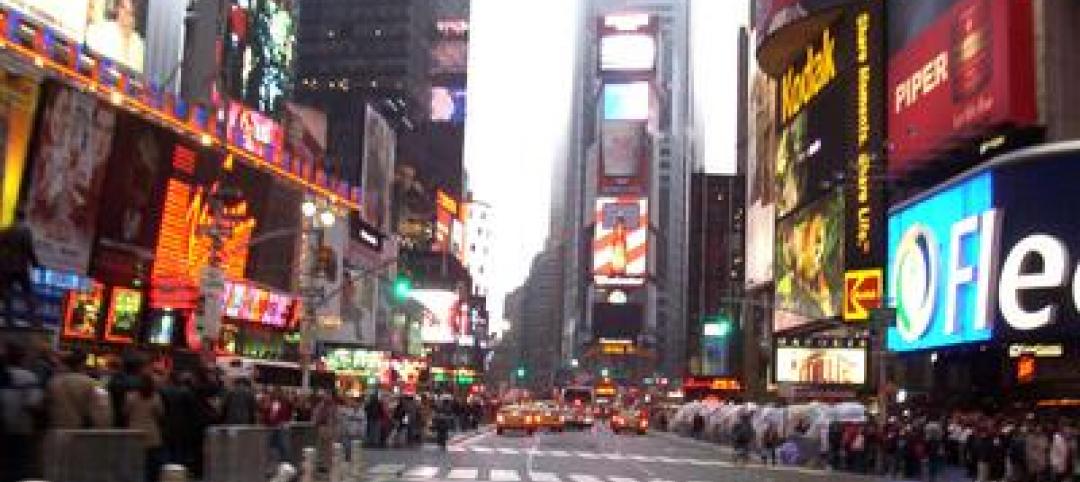As school construction budgets tighten, administrators and boards in the nation’s 13,000 public school districts are constantly on the lookout for hard evidence to justify the perceived—if not always actual—cost premiums associated with the decision to go green.
Help comes in the form of a study conducted by design firm DLR Group and the Institute for the Built Environment at Colorado State University, “Linking Performance & Experience: An Analysis of Green Schools.”
The research team started with the U.S. Green Building Council’s definition of a green school: “a school that creates a healthy environment that is conducive to learning while saving energy, resources, and money.”
Measuring energy use, resources, and money is fairly straightforward. Measuring student health and performance is another story. Aggregated test scores, absentee statistics, and graduation rates are all essentially public information, but jumping the legal and administrative hurdles of gathering data on student health and “soft” performance factors like “behavior” can be daunting.
“Everybody wants this hard data research, but we’re dealing with public school systems and there are privacy issues,” not to mention the cost of gathering such data, says Andy Ernsting, a Principal at DLR.
CREATING THE RESEARCH METHODOLOGY
In the DLR/IBE study, the researchers surveyed building occupants at 10 sites with a total of 12 green schools, completing interviews with facility managers on all 10 campuses. Fifty-three teachers, staff, and administrators from these schools completed an online questionnaire that asked how they perceived the impacts of sustainable design on student performance.
The results were overwhelmingly positive: 71% of respondents said they saw a positive effect on student achievement, 87% reported a positive impact on student health, 71% perceived a positive effect on student behavior, and 85% said they saw evidence of personal improvements in health and productivity.
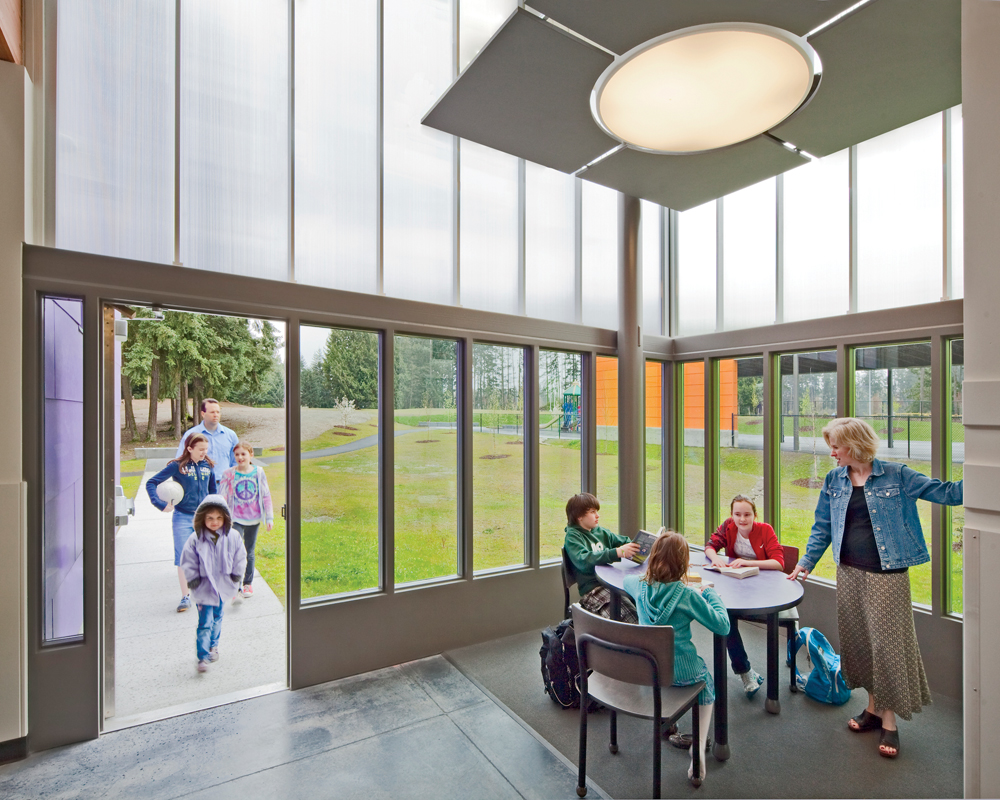
The design of Panther Lake Elementary School in Federal Way, Wash., uses daylighting and transparency to connect the building to the surrounding wetlands, forests, and fields. The 45,000-sf replacement school meets Washington Sustainable Schools Program requirements, the first of four such schools for Federal Way School District No. 210. DLR Group provided architecture, engineering, and planning services. The Building Team also included: Swenson Say Faget (SE), OTAK (CE and survey), Karen Kiest Landscape Architects, BRC Acoustics, JLR Design Group (food service consultant), and Babbit Neuman Construction Company (contractor). Photo: courtesy DLR Group
“I believe that a bright and comfortable work environment is healthier and makes people (adults and students alike) want to work more efficiently,” said one respondent.
“Sometimes perception is reality, and if people believe they’re in a higher-quality environment, they just perform better,” says Jim French, DLR Group Senior Principal and K-12 Education Studio National Leader. “I think some subjectivity of higher quality of comfort is not a bad thing.”
HOT TO IDENTIFY STUDENT PERFORMANCE IMPROVEMENTS
Brian Dunbar, the IBE’s Executive Director and Professor Emeritus at Colorado State, says that it may be possible to draw a more direct correlation between the sustainable characteristics of a school’s architecture and better student performance. ”We’re coming to the place of saying, OK, the test scores are better here, let’s look at why.”
Dunbar says the definition of a healthy school starts with indoor environmental quality. Healthy air, light quality (both daylight and electrical), thermal comfort, and acoustics are all elements of a healthy school, he says.
“With some of our recent research, we’ve shown that with good air quality and thermal comfort, kids are actually missing fewer days of school,” says DLR’s French. He says statistics of that kind can be powerful with school districts, even those that feel sustainable design comes with higher upfront costs. “If the research shows that students will stay in their seats because they’re not sick, that’s a big selling point,” he says.
Seventy-one percent of respondents saw evidence of an improvement in student behavior, notably less violence, vandalism, and bullying. While there is no hard evidence to prove the case, Dunbar believes environmental factors can have an effect on a student’s mood, which can impact behavior. “We’re talking about a calmer place, a cleaner, more organized space,” he says.
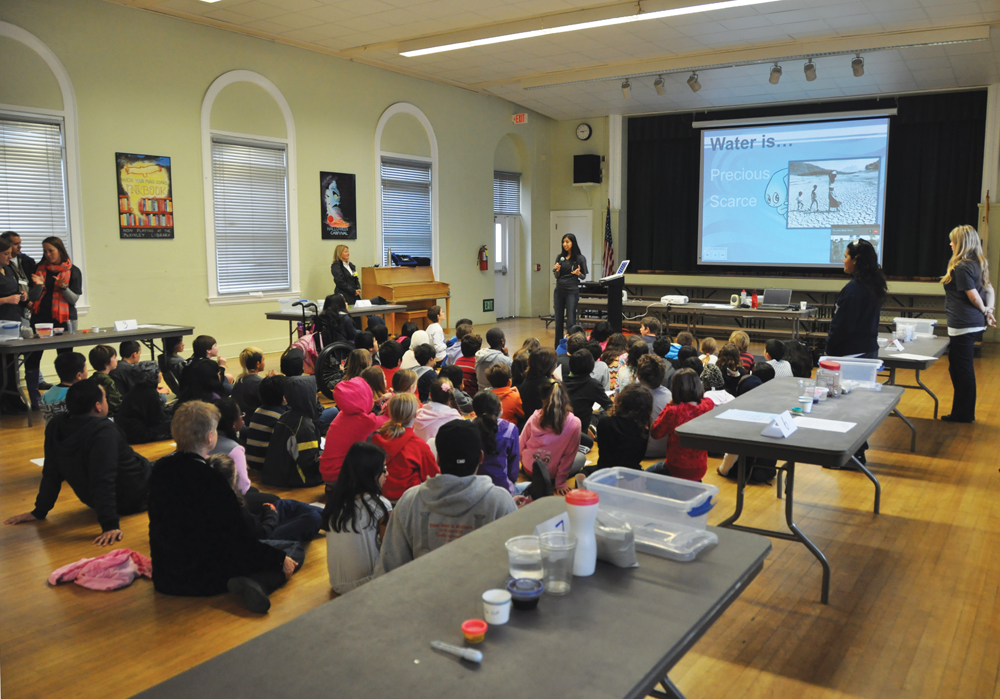
HMC Architects’ ArchLab has developed a program in coordination with Santa Monica–Malibu Unified School District and McKinley Elementary School to educate elementary school students about their role in sustainable living. The team also trained Santiago High School students on how to teach the lessons to elementary school students, and is publishing a children’s book based on the workshops. Photo: courtesy HMC Architects
French notes the importance of student involvement in the development of a green school, particularly for older students. “You’ve got to involve the students in the vision of the school,” he says. “They’ve got to believe they’re part of it.”
“The students are proud of their building, which has all but eliminated any school vandalism,” said one survey respondent. “There is a level of pride in being a student at Pioneer [a middle school in the study] and the students’ behavior is a reflection of that pride in their building.”
Students should also take part in the day-to-day operations of the school, from monitoring energy use via interactive screens, to food and waste recycling. “We call this ‘building as curriculum,’” says Ernsting. “Make the operation of the building part of the student experience.”
French believes administrators are becoming more open to the idea of green schools. “As districts become more sophisticated, green schools are going to be mandatory,” he says. “School districts aren’t getting any more money from the public, so it’s critical that green building costs not go up. We have a responsibility as architects, engineers, and contractors to figure out how to get these buildings done as inexpensively as we can.”
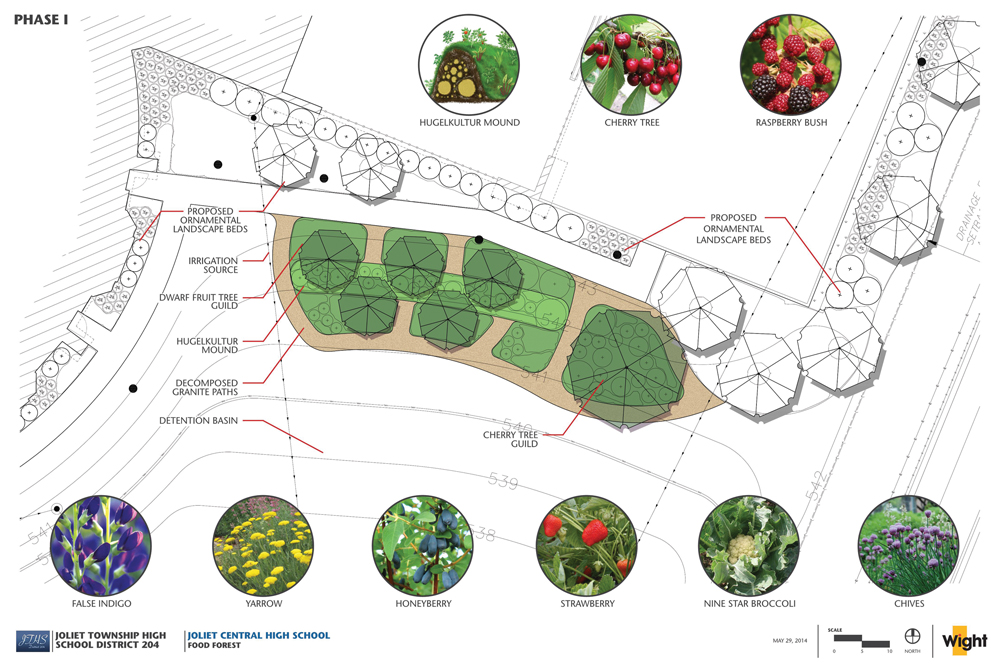
Wight & Company has proposed an “edible forest” on the campus of Joliet (Ill.) Central High School as part of a kitchen, cafeteria, and galleria addition currently under way. The proposed garden would use a form of permaculture based on a woodland ecosystem. If implemented, the sustainable ecosystem will include nitrogen fixers, insect repellents, and trees, shrubs, and ground covers to teach students about sustainable food production. Photo: Wight & Company
Related Stories
| Dec 21, 2011
Hoboken Terminal restoration complete
Restoration of ferry slips, expanded service to benefit commuters.
| Dec 21, 2011
BBI key to Philly high-rise renovation
The 200,000 sf building was recently outfitted with a new HVAC system and a state-of-the-art window retrofitting system.
| Dec 20, 2011
Gluckman Mayner Architects releases design for Syracuse law building
The design reflects an organizational clarity and professional sophistication that anticipates the user experience of students, faculty, and visitors alike.
| Dec 20, 2011
Research identifies most expensive U.S. commercial real estate markets
New York City, Washington, D.C. and San Mateo, Calif., rank highest in rents.
| Dec 20, 2011
Third annual Gingerbread Build-off winners announced
Nine awards were handed out acknowledging the most unique and creative gingerbread structures completed.
| Dec 20, 2011
BCA’s Best Practices in New Construction available online
This publicly available document is applicable to most building types and distills the long list of guidelines, and longer list of tasks, into easy-to-navigate activities that represent the ideal commissioning process.
| Dec 20, 2011
Aragon Construction leading build-out of foursquare office
The modern, minimalist build-out will have elements of the foursquare “badges” in different aspects of the space, using glass, steel, and vibrantly painted gypsum board.
| Dec 20, 2011
HOAR Construction opens Austin, Texas office
Major projects in central Texas spur firm’s growth.
| Dec 19, 2011
HGA renovates Rowing Center at Cornell University
Renovation provides state-of-the-art waterfront facility.
| Dec 19, 2011
Chicago’s Aqua Tower wins international design award
Aqua was named both regional and international winner of the International Property Award as Best Residential High-Rise Development.


